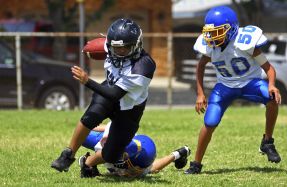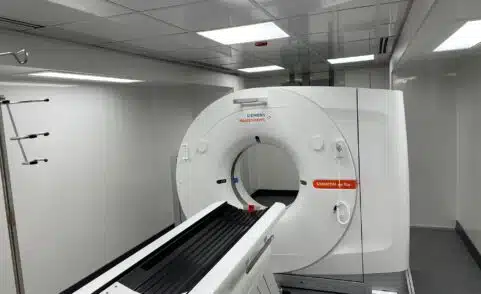
Imaging Concussions in Young Athletes

If you have a child entering fall sports, like football or soccer, you may have gotten information from the coaching staff about the risk of concussions. Articles from the New York Times have offered clear advice to parents and coaches as well, including this simple flashcard test for sideline use.
The conversation is important because concussions are a form of Traumatic Brain Injury (TBI) and can alter the way the brain functions. Early research shows that a developing child’s or adolescent’s brain is even more vulnerable to impact than an adult brain.
The concussion laws bring to light the need to shift our behavior when it comes to our young athletes.
Concussion laws have three main goals:
-
- Better educate coaches, parents and athletes on concussions
- Remove an athlete from play who may have a concussion
- Return an athlete to play or practice only with permission from a health care professional
The signs and symptoms described below indicate that a concussion may have occurred in an athlete:
Signs observed by coaching staff
- Appears dazed or stunned
- Is confused about assignment or position
- Forgets sports plays
- Is unsure of game, score or opponent
- Moves clumsily
- Answers questions slowly
- Loses consciousness (even briefly)
- Shows behavior or personality changes
- Can’t recall events prior to hit or fall
- Can’t recall events after hit or fall
Symptoms reported by athletes
- Headache or “pressure” in head
- Nausea or vomiting
- Balance problems or dizziness
- Double or blurry vision
- Sensitivity to light
- Sensitivity to noise
- Feeling sluggish, hazy, foggy or groggy
- Concentration or memory problems
- Confusion
- Does not “feel right”
When to turn to medical imaging?
If you notice symptoms, such as a severe headache, seizures, repeated vomiting or other worsening issues, medical imaging may be the appropriate next step so it’s important to talk to your doctor. He or she can use the imaging results to better understand any change that is occurring in your athlete’s brain as a result of continuous small hits, concussions or other serious brain injuries.
CT: Ideally, a CT should be performed shortly after the injury occurs as it excels in trauma imaging due to its speed and ability to show bleeds in the brain.
MRI: For an athlete with prolonged symptoms that last longer than seven days or if a change in neurologic symptoms occur, consider MRI as it excels at imaging the soft tissue in the brain and showing more subtle findings than visible on CT.
A proper diagnosis following an injury may help keep kids safe and allow them to enjoy sports throughout their lives.
